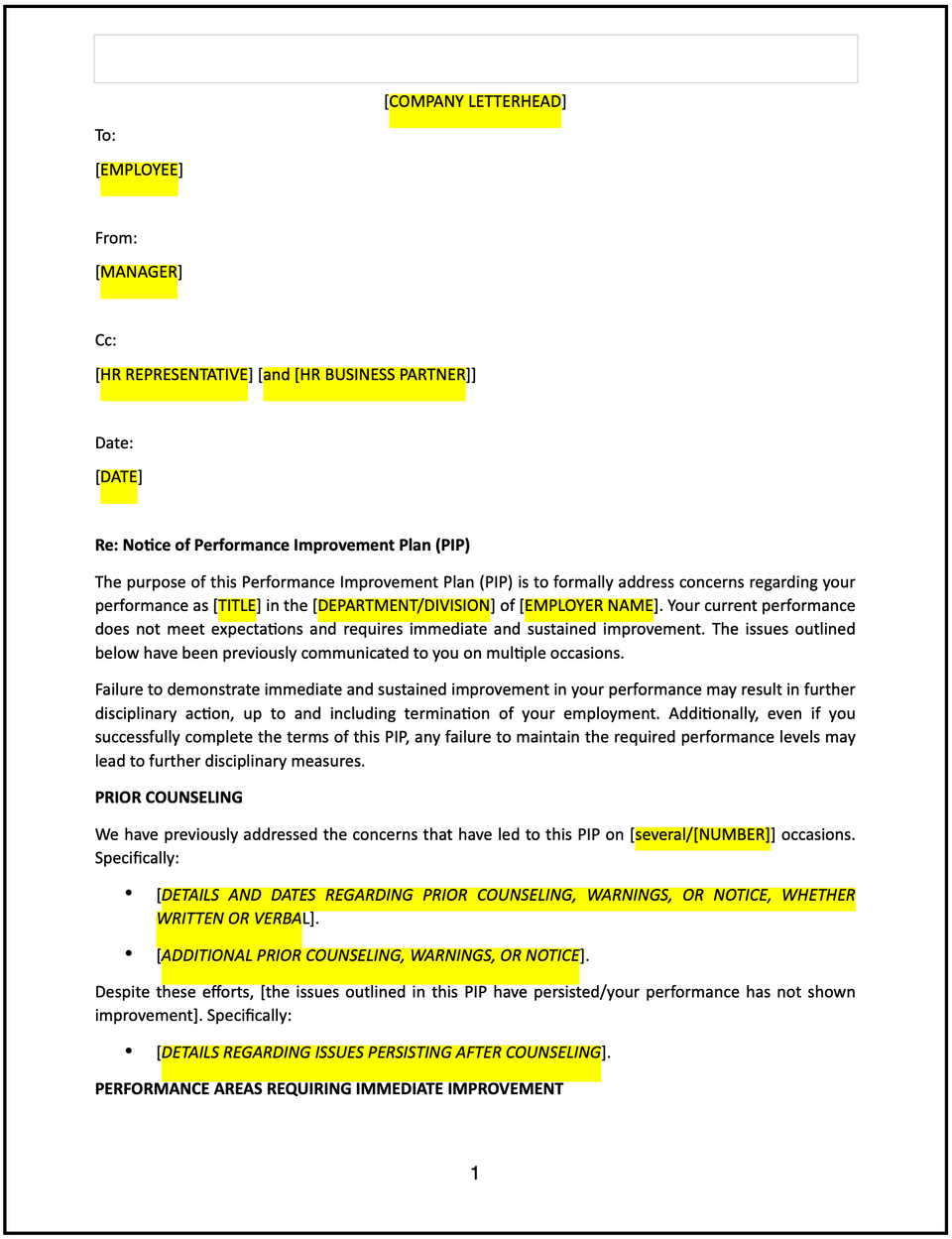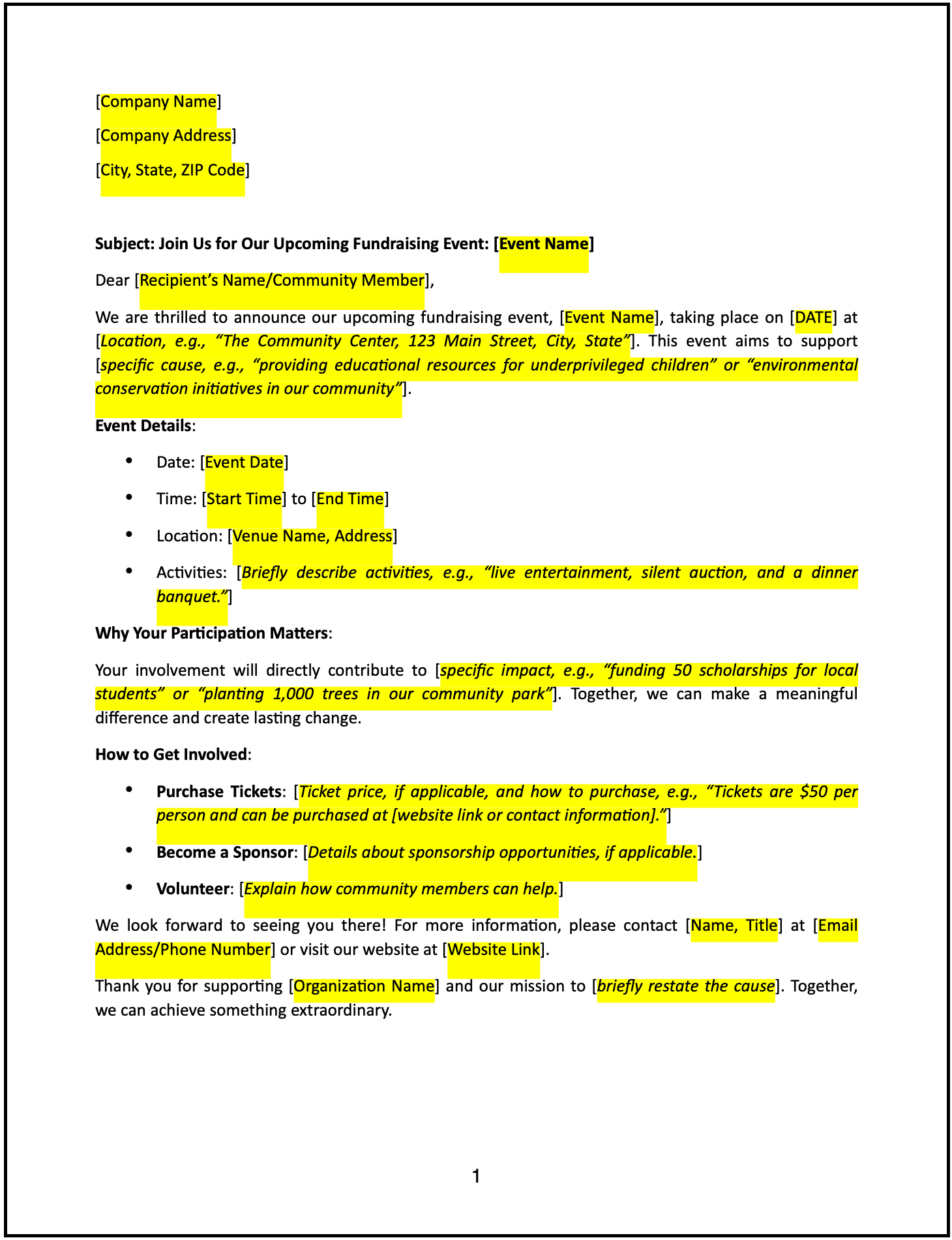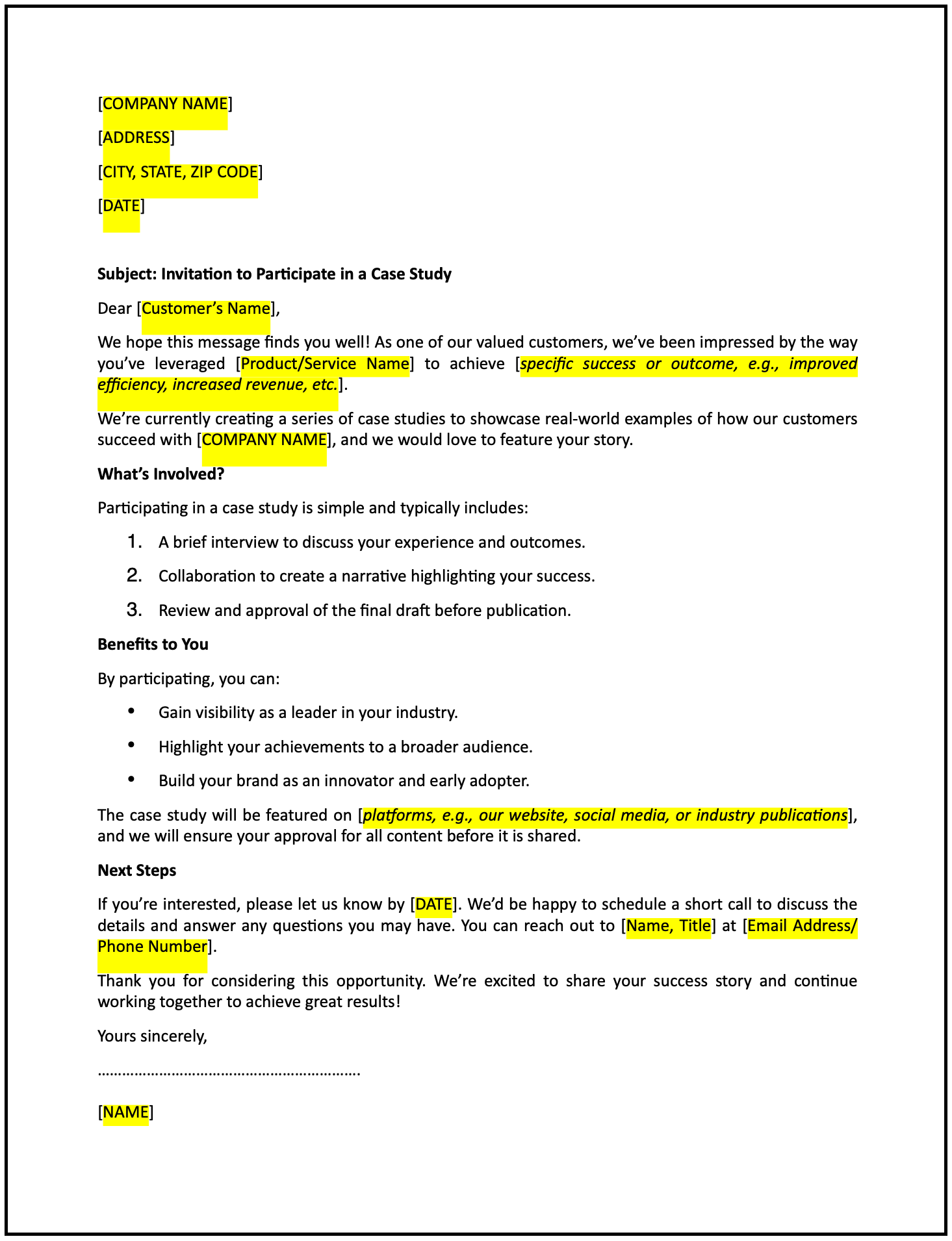Performance improvement plan (PIP): Free template

Performance improvement plan (PIP)
A performance improvement plan (PIP) is a formal document designed to address specific performance issues, provide actionable feedback, and set clear expectations for improvement. This letter ensures clarity, supports professional development, and fosters alignment between the employee and organizational goals.
How to use this performance improvement plan (PIP)
- Open with context: Begin by referencing prior discussions or evaluations that highlighted the performance concerns.
- State the purpose: Clearly explain that the PIP is designed to support the employee in addressing specific performance gaps and achieving success in their role.
- Outline the concerns: Describe the specific performance issues or areas where the employee has not met expectations, referencing examples or metrics if applicable.
- Define expectations: Provide a clear description of the goals or standards the employee is expected to meet during the PIP period.
- Set a timeline: Specify the duration of the PIP, including start and end dates, and any checkpoints for reviewing progress.
- Provide resources: Mention any support available, such as training, mentoring, or tools, to help the employee meet the outlined expectations.
- Explain consequences: State the potential outcomes of the PIP, such as successful completion, extension, or further disciplinary action if expectations are not met.
- Maintain a professional tone: Ensure the letter is respectful, constructive, and focused on fostering improvement.
- Include contact information: Provide details for further discussions or to address questions about the PIP.
Benefits of using a performance improvement plan (PIP)
This document ensures a structured and professional way to address performance issues while fostering transparency and accountability. Here’s how it helps:
- Encourages improvement: Clear goals and actionable feedback provide a path to better performance.
- Reflects professionalism: A well-crafted PIP demonstrates the organization’s commitment to employee success.
- Promotes fairness: Addressing concerns formally ensures employees are given an opportunity to improve.
- Reduces misunderstandings: Clearly outlining expectations minimizes confusion and ensures alignment.
- Supports documentation: A formal record of the PIP is valuable for HR and potential legal purposes.
Tips for creating an effective performance improvement plan (PIP)
- Be specific: Clearly describe the performance concerns, goals, and steps needed to improve.
- Use professional language: Maintain a respectful and constructive tone to encourage collaboration.
- Highlight support: Emphasize the resources and assistance available to help the employee succeed.
- Set realistic goals: Ensure the expectations are achievable within the specified timeframe.
- Include regular check-ins: Schedule progress reviews to provide feedback and address concerns throughout the PIP period.
Frequently asked questions (FAQs)
Q: What details should I include in this PIP?
A: Include the performance concerns, expectations, timeline, resources for improvement, and potential outcomes.
Q: Should I personalize the PIP?
A: Yes, tailoring the PIP to the employee’s specific role and situation ensures relevance and effectiveness.
Q: Who typically creates this document?
A: The employee’s manager or supervisor, often in collaboration with HR, creates and communicates the PIP.
Q: How formal should the PIP be?
A: The tone should be professional, constructive, and focused on fostering improvement.
Q: When should this document be issued?
A: Issue the PIP promptly after identifying performance concerns and discussing them with the employee.
Q: Can this document include a follow-up schedule?
A: Yes, scheduling regular progress reviews ensures the employee receives ongoing feedback and support.
Q: Is acknowledgment from the recipient required?
A: Yes, requesting acknowledgment ensures the employee understands the PIP and its expectations.
This article contains general legal information and does not contain legal advice. Cobrief is not a law firm or a substitute for an attorney or law firm. The law is complex and changes often. For legal advice, please ask a lawyer.


